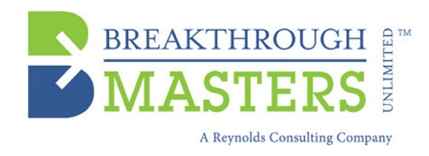Omaha Steel Castings Company
Challenging the status quo is never easy. First, you must realize that you need to. Then you need to figure out what you want to be different. And finally, you need to engage the organization in getting it done. To not only generate transformative results but sustain them over time requires companies to have a growth mind-set that encourages innovation and a culture that welcomes change. I call that mind-set “GrowthDNA”.
What is GrowthDNA?
GrowthDNA is the genetic composition of your organization with respect to its approach and success in driving profitable growth. It is made up of four integrated strands
- Confidence: relevant market intelligence that breeds confidence for making bold decisions
- Clarity: clarity in strategic direction
- Commitment: leadership that builds commitment to a common vision
- Culture: an inclusive growth-minded culture where employees feel valued for their work.
Companies who lack those 4 C’s—confidence, clarity, commitment, and culture—are among the 67% who struggle to achieve modest growth let alone sustain it over time. Omaha Steel Castings is NOT one of those companies. In fact, 2017 year-over-year growth was 42% and they are on the path for significant increases in 2018.
CEO Using GrowthDNA to Set New Industry High bar
To get those kind of results Kevin Brown, CEO of Omaha Steel Castings Company, has challenged the status quo of one of the most traditional of industries. Their goal is to become a premiere steel foundry across the globe. To do that, Brown and his team had to re-think their approach and build their GrowthDNA.
Start by identifying unmet needs
According to Brown, you start with good market data. Identifying common issues in the industry, talking to customers about their preferences, and looking for ways to bring new solutions to old problems set the foundation for their strategy. As Brown said, “Strategy is often set by management internally without adequate exposure to what customers want. That means we must spend time in the field working with and talking to customers. Strategy set in a board room may not stick.”
They discovered that there was too much error in taking a customer’s concept and specs and using that for casting. By working as a team—engineers with customers—they could co-design parts that could be produced in less time, with lower costs, much faster and work properly. Brown increased the engineering staff from 1 to 7 engineers and invested in technology that helped in simulated modeling. “The result”, Brown said “is better production with a better end product. If we put the work in up front, our value-add pays off on the backside.”
Be willing to be different
Their approach is not for everybody; it requires skill sets and investment most traditional companies don’t have. It allows them to be different in the market and difference enables non-price based competition. Omaha Steel Casting Company doesn’t compete on the standard price per pound but rather on total cost. Brown shares, “We put emphasis on low total cost which is a composite of things like the number of good parts with no extra labor, fallout in production, and shipping reliability which aids inventory management eliminating excess.”
From strategy to performance requires strong culture
As most of us who lead companies know, developing the strategy isn’t enough. Putting it into action is where the results happen. Omaha Steel Casting Company put a lot of effort into creating a culture of trust. They prioritize safety and creating a great atmosphere where team members want to work hard and feel valued for doing so. Brown made sure that employees understand what company growth means to them and the organization and how they impact it. “The goal was to be sure employees didn’t look at growth as more work but rather more opportunity,” Brown said. “It has been most rewarding to see individuals grow along with the company.”
The hard work begins when the strategy is set. Commitment and culture are the tricky part, according to Brown. It requires constant communication, getting employee buy-in, and being sure leadership keeps the message visible and consistent. Brown holds lunch and learns with employees to keep energy up. In fact, Brown says that “Most of my focus over the last 10 months compared to three years ago is on employee communication. We all try to roll up our sleeves to get the job done. I’ve taken Saturday shifts to give supervisors breaks and cleaned bathrooms in plants. When people see your heart, that you are willing to work alongside them, and know your interests are in the right spot, it is amazing to see what people will do for each other. We are rowing the boat together.”
Moving forward, Brown sees communication as the single biggest opportunity and challenge. Strategy is a long-term drumbeat with no significant changes. The key will be how well they continue to deliver on it and how high they can raise the bar. Brown sums it up, “For us to continue to move forward, the only thing that will stop us is us. We need to be sure the team stays fully vested in wanting success. That means we have to take care of our people and take care of our customers. The rest of it solves itself.”
Here you can create the content that will be used within the module.

